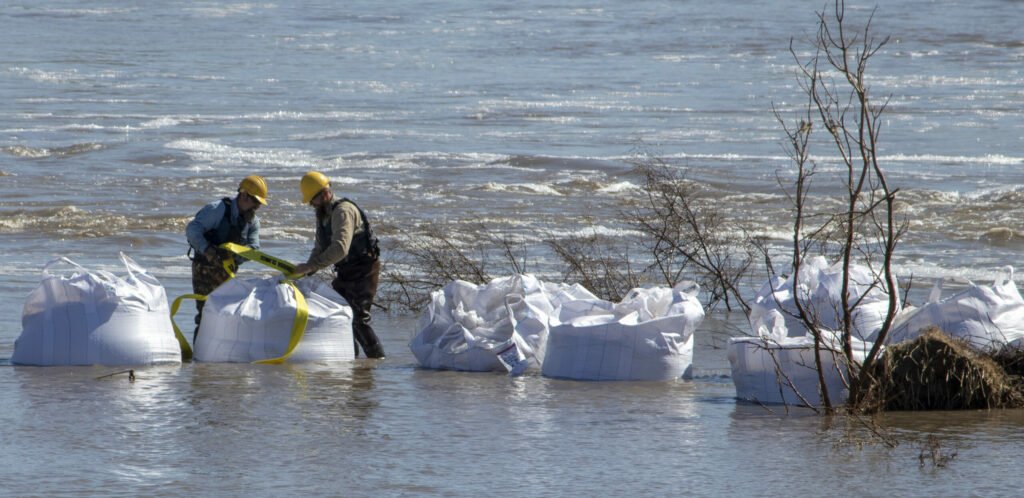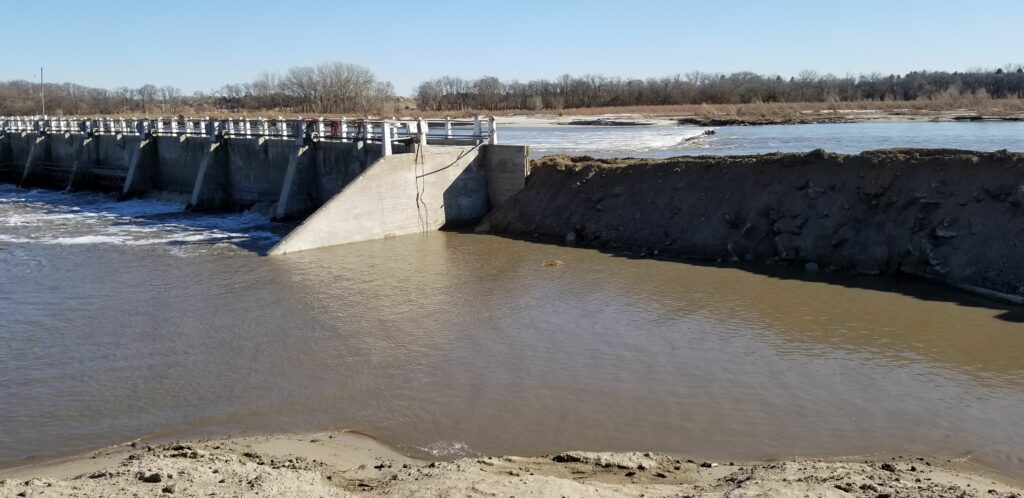Originally published in the Spring 2019 issue of the Generator. Download
The before and after photos illustrate the destructive power of water and ice.
A home lost. A building damaged. Earth and concrete moved with apparent ease. Water everywhere. It seemed unbelievable.
The water began rising March 13. Loup Power District employees tried to fight Mother Nature with sandbags and determination. But in the end, they had to concede.
“We didn’t win this battle,” said Andy Zarek. “We’ll get the next one.”
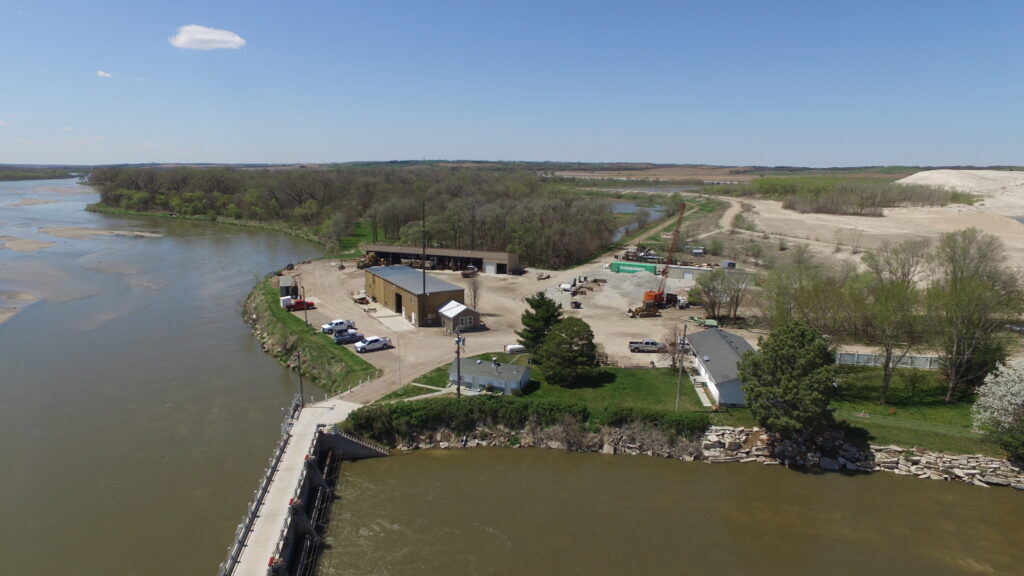
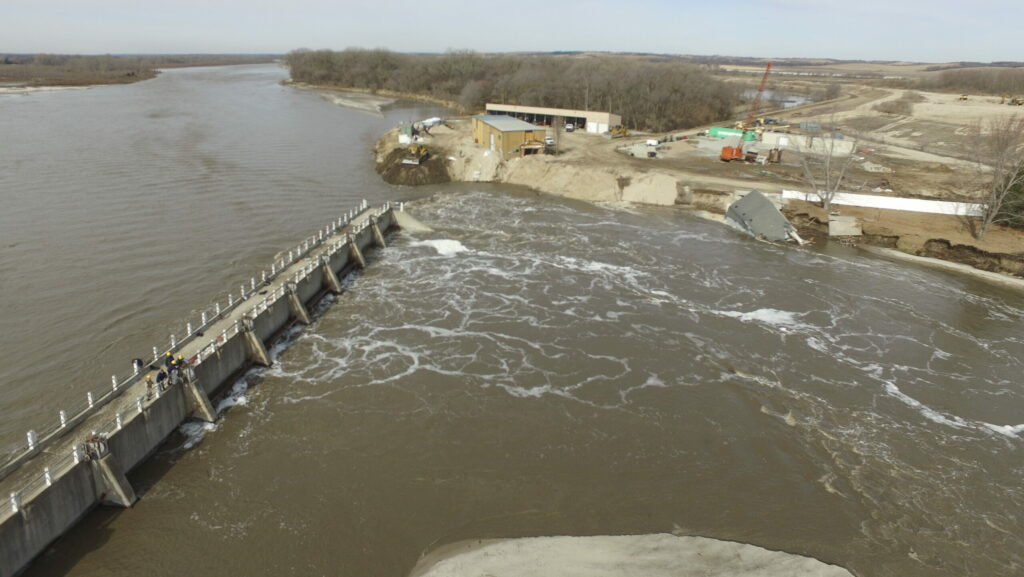
‘A recipe for disaster’
Zarek began working for Loup Power District 20 years ago at the age of 18. Three years ago, he was named Headgates Operator and moved with this family to a District-owned home on the site.
He knows the river can behave badly this time of year. He watches it daily. Listens to weather reports. Monitors the canal.
Weather reports warned of a bomb cyclone that was forecast to hit much of Nebraska. The explosive storm, fueled by rapidly dropping atmospheric pressure, would hit like a winter hurricane. Still, Zarek wasn’t overly worried.
On Monday, March 11, Loup employees broke up ice around the intake gates with dynamite and a crane. They noticed it was unusually thick — about two feet in spots.
Usually, the weather warms up a bit in February, melting and breaking the river ice cap slowly. But this February was unusually cold. And early March followed suit, roaring in like a lion.
Then, the forecast for Wednesday, March 13, called for highs around 60 °F with some heavy rain.
“That’s a recipe for disaster,” he said.
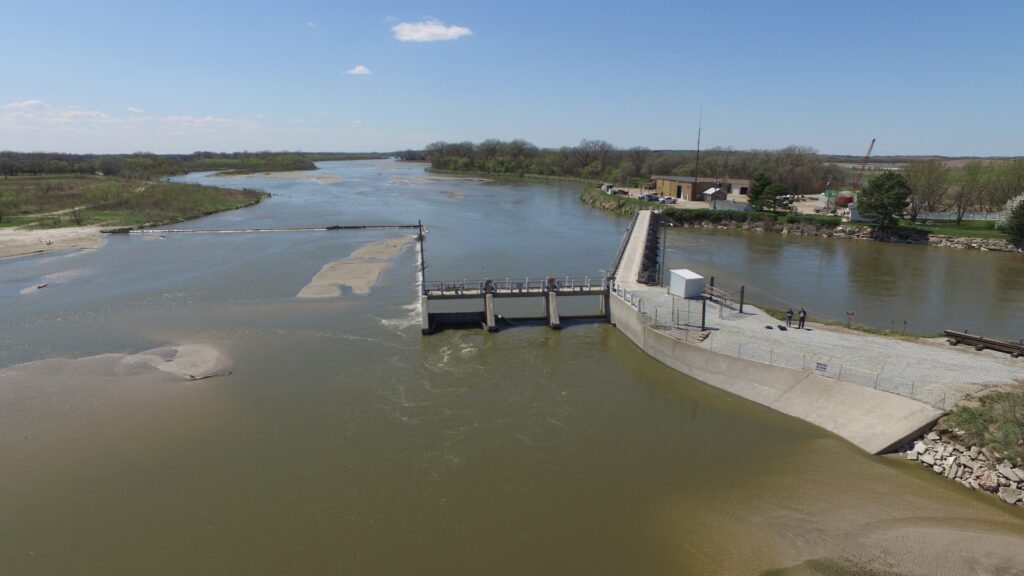
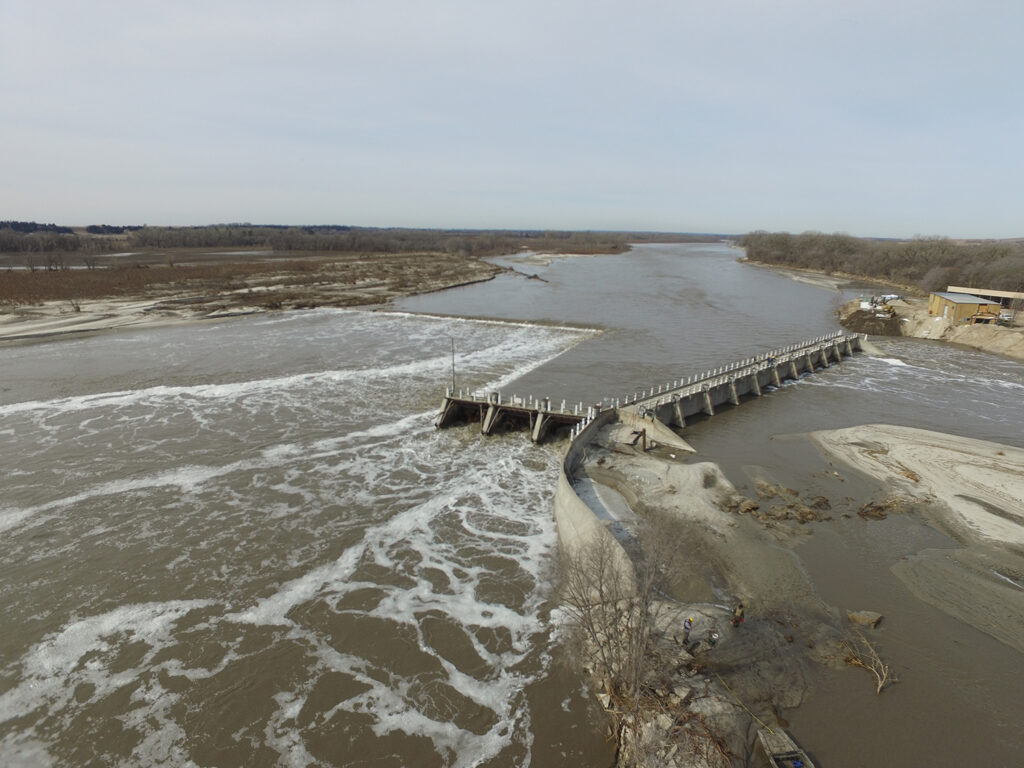
‘Way more than we expected’
The Loup Power canal and two powerhouses were constructed in the 1930s with a $7.3 million loan and grant from the Public Works Administration. The Genoa Headworks serves as the beginning of Loup’s canal system. Gates are adjusted as needed to direct the proper amount of water from the Loup River into the canal.
More than 80 years of ice jams and heavy rains and snow melt have passed through the canal. Only once, in August of 1966, did those waters cause any substantial damage.
Heavy rain filled the Loup River and spilled over the intake structure. The water flowed north and traveled along the side of the canal before washing out a road and going back into the canal.
It also washed out two bridges and damaged a number of transmission lines. The District’s dredge — used to clean sediment from the two-mile settling basin at the start of the canal — washed downstream until it hit a tractor. The impact was nearly $600,000 — about $4.4 million in today’s dollars.
But that was more than 50 years ago.
For the last 26, Randy Prososki has also watched over the river and canal. He took over as Headworks Supervisor last October following the retirement of Gary Pearson.
Every year, the ice jams break up and go down river.
“We were prepared for the ice to go out of the river like it does every year,” Prososki said.
And that’s what happened on the afternoon of Wednesday, March 13. The first ice jam broke and went through the canal at around 3:30 p.m., followed by a second around 5 p.m. Then Prososki headed home.
Zarek watched the ice go through the canal. It was a little thicker than usual and bent up a few of the gate arms, but he figured they could be replaced. He still wasn’t overly concerned, but asked his wife and two children to stay in Genoa with family. Better to err on the side of caution.
A third jam came through around 7 p.m. Zarek sent a video to Prososki, who was alarmed at what he saw.
The jam passed and the river quieted down. But the water kept rising and Zarek became uneasy. He knew there must be an ice jam causing the water to back up.
Prososki made his way back to the Headworks.
“It was just way more than we expected,” he said.
The water kept rising and around 9:30 that evening, Prososki called employees asking them to help sandbag.
“We couldn’t handle it anymore,” he said.
‘The approach disappeared’
Jesse Hoffmeister joined the Genoa Headworks maintenance crew in January. He worked his shift that Wednesday, leaving at 4 p.m.
He made it home to St. Edward, about 10 miles north of the Headworks, only to find that the Beaver Creek was over its banks and flooding the town.
As a member of the volunteer fire department, he began helping rescue stranded residents. He made it home around 9:45 p.m. when he got the call from Prososki asking for help.
Because of the Beaver Creek flooding, he couldn’t take his normal route back to work. Instead, he traveled northwest to Albion and then back south and east.
When he arrived at the Headworks around 11:30 p.m., he voiced his disbelief at the amount of water. The veteran employees told him it had been like this before. Everything would be okay.
Hoffmeister and the other employees began sandbagging the intake structure approach.
“We thought we were getting ahead of it,” he said.
Suddenly, they heard a pop and ran about 30 yards toward the shop.
“The light pole just started falling over and the whole approach disappeared,” Hoffmeister said.
John Fritzges, like Hoffmeister, is new to his job. He is also on the maintenance crew and was a few weeks away from his one-year anniversary when he got the call asking him to sandbag.
“The most unnerving thing was just watching that approach go in after we had just gotten off of it,” he said.
Zarek said the 10-man crew just couldn’t keep up with the rising river.
“We tried for three hours, but it just wasn’t enough,” he said.
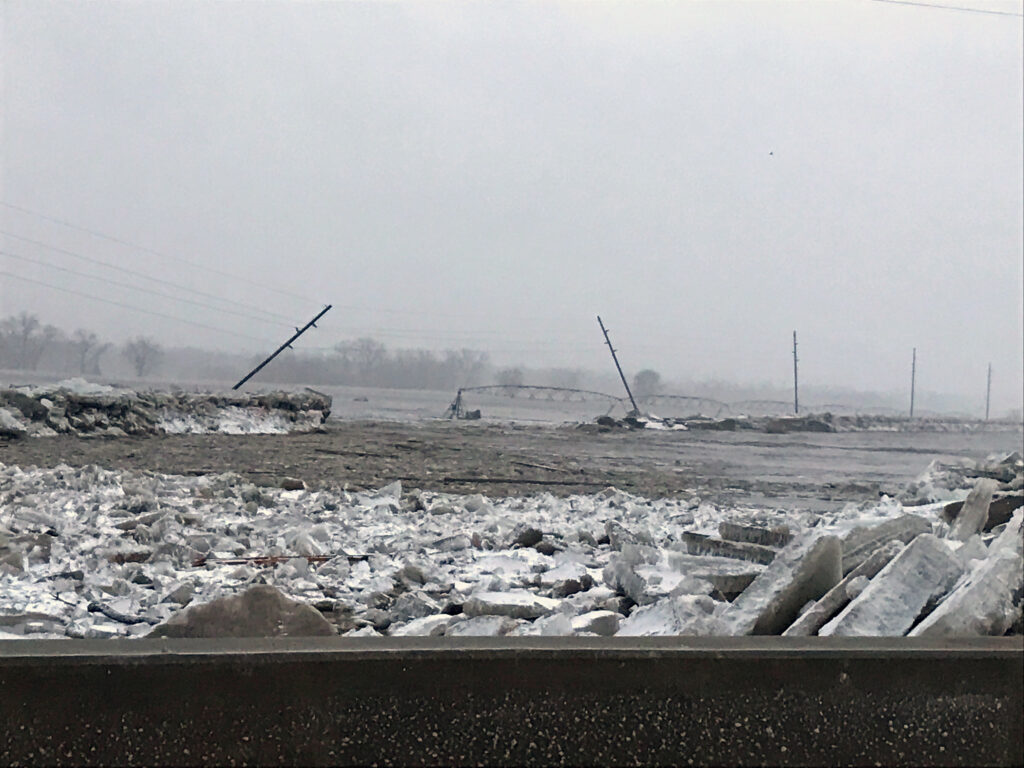

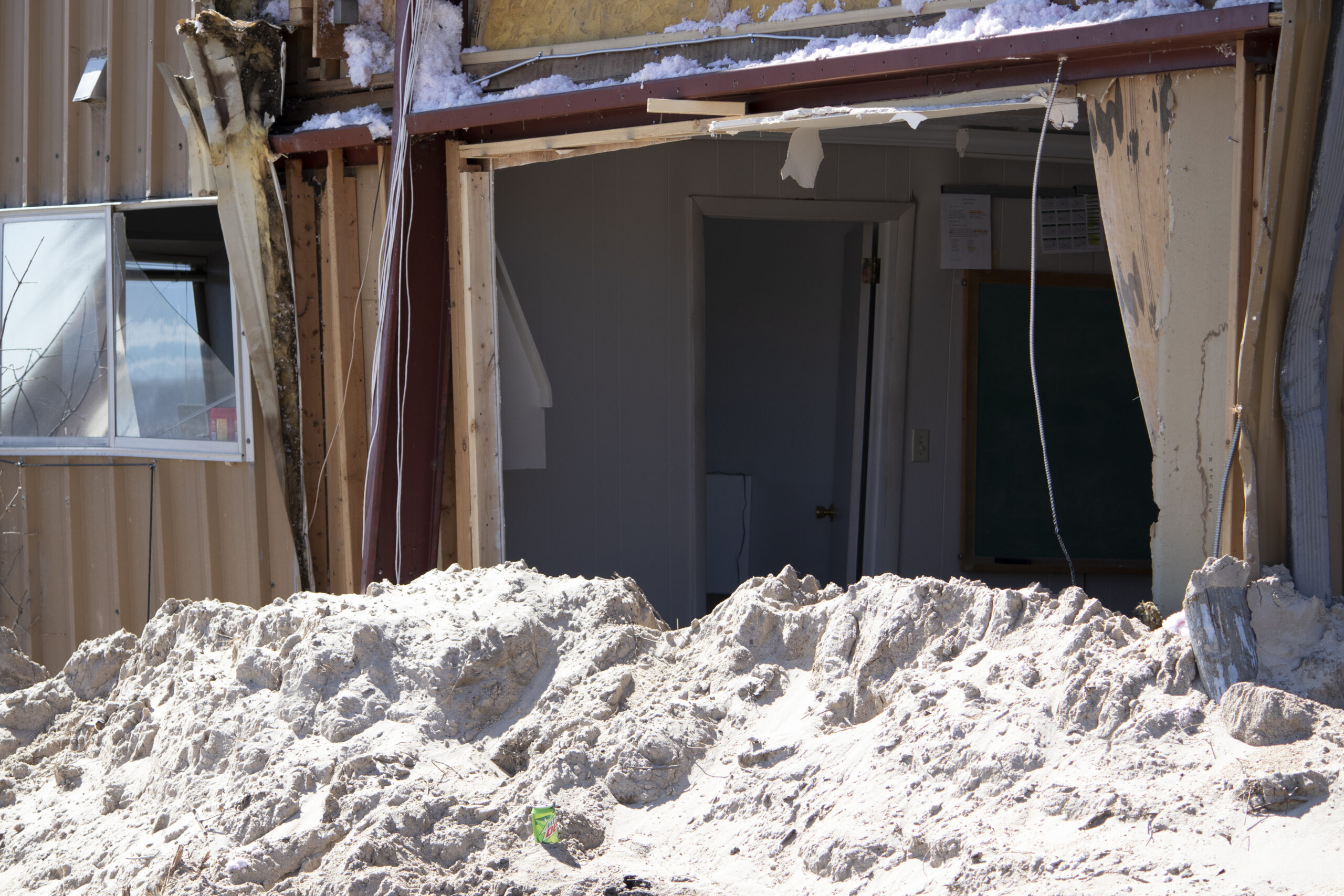

‘It was a nightmare’
The water successfully breached on the north side of the intake structure.
“It washed out all the concrete and dirt and made a 30-foot waterfall until it ate out enough to drain the river through the whole canal system,” Zarek said.
Employees knew they had to leave quickly. The water was starting to flow north to Preferred Sands and they realized Headworks Park was going to flood as well, blocking their exit.
Prososki ensured the crew got out of the area and told them to head home while he stayed to watch over the Headworks. About 1:30 a.m. on Thursday morning, he saw the intake structure walls begin to fully give way to the river.
A boiler room sits on the edge of the canal. Crews use it to steam ice from the gates in winter. Prososki watched the water consume it, too, before deciding it was time to go. He drove over ice chunks to make it to the highway. There, he waited for daylight and prayed the canal wouldn’t breach in Genoa, about five miles to the northeast.
Meanwhile, Zarek was trying to make it to Genoa. The familiar, short trip took almost an hour and a half because the Beaver Creek flooding made its way downstream from St. Edward.
He went west to Fullerton and north to Albion. Then he took gravel roads back to St. Edward and Genoa, making it into town around 2 a.m.
An hour later, Loup officials activated the Emergency Action Plan, which called for evacuations of residents in the high-hazard area near the canal.
By 3:30 a.m., Zarek, also a volunteer firefighter, began knocking on doors just as the storm’s winds and snow hit the area.
“We were sandbagging in t-shirts. Two hours later, everybody was looking for coveralls and winter coats because it’s snowing and blowing,” Zarek said. “It was a nightmare.”
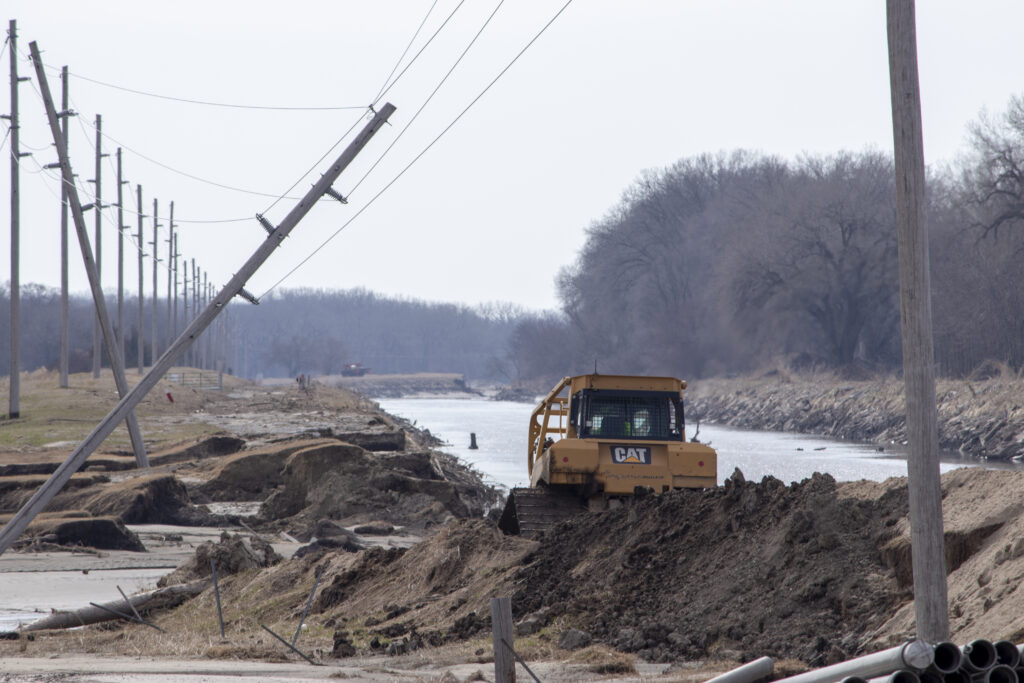
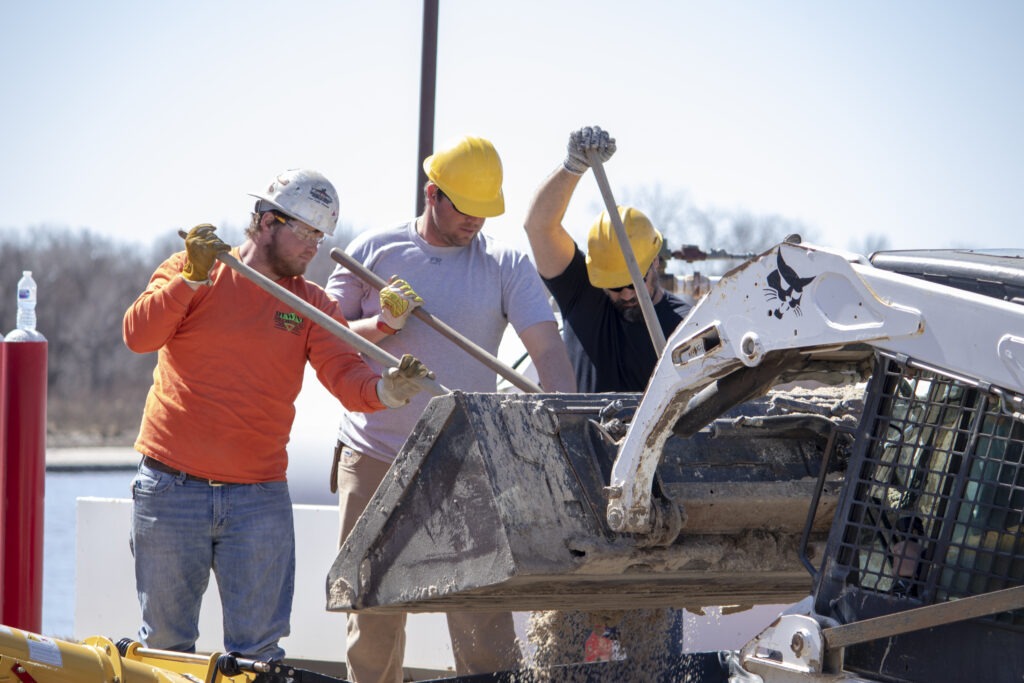
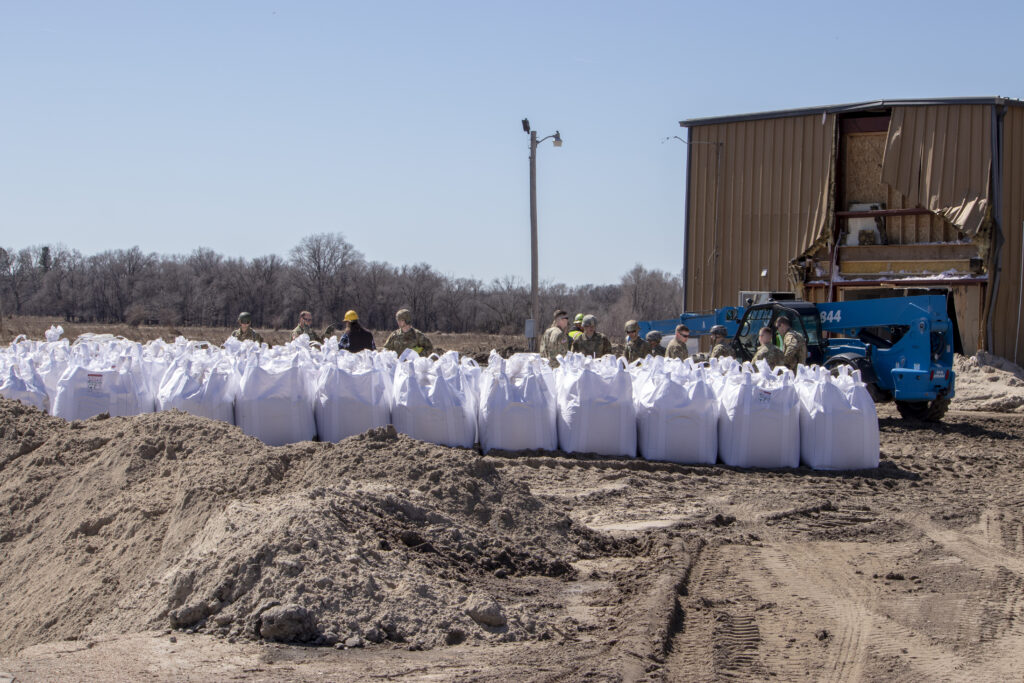
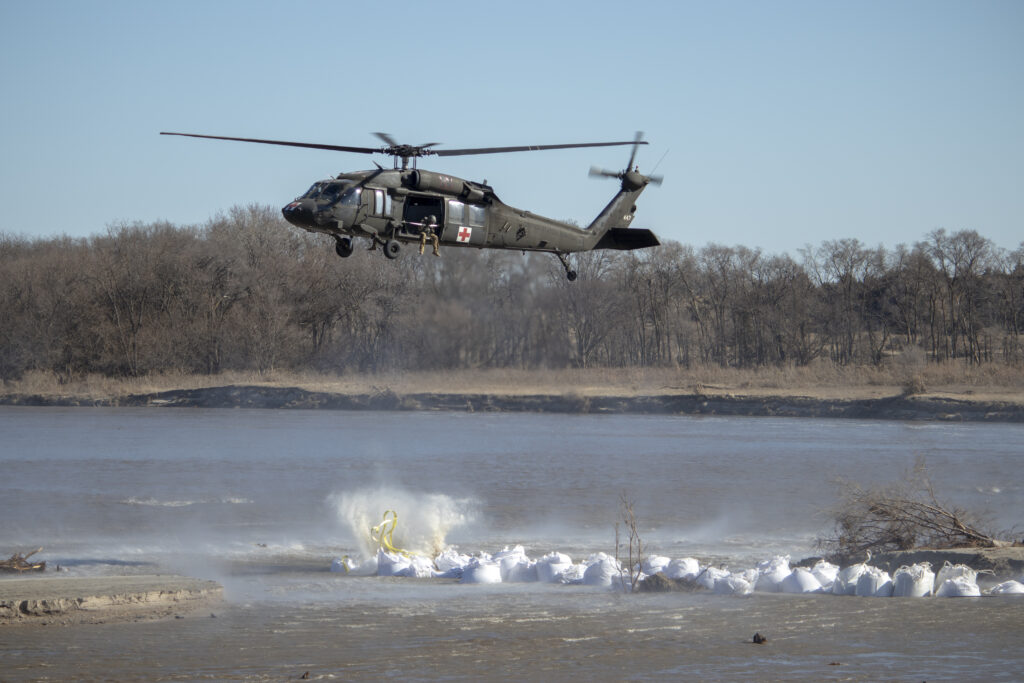
‘Never in my lifetime’
At daybreak on Thursday, March 14, Prososki was able to make it to the Highway 22 bridge, a few miles southwest of Genoa, where he saw a large breach.
He and other employees were anxious to survey damage at the Headworks, but the roads to get there were washed away. Fierce winds prevented helicopters and drones from flying.
By Friday morning, those winds died down and helicopter pilot Kim Wolfe flew a few employees to the Headworks for the first time since Wednesday night.
They found six breaches, including two gaping holes on each side of the intake structure. Zarek’s home tipped into the canal. The parking lot missing. A 2016 addition to the shop ripped off. The weir bridge gone.
“We were all in awe,” said Dan Hellbusch, Vice President of Operations.
Prososki said the damage was devastating. “I would have never in my lifetime thought this would happen,” he said.
It was especially so for Zarek, whose work and home lives mesh in a unique way at the Headworks.
“You can’t go home because it’s gone,” he said.
Then, he gestures to the canal and shop.
“This is like a second home and it’s partly gone,” he said. “Where do you start? What do you do? It’s tough.”
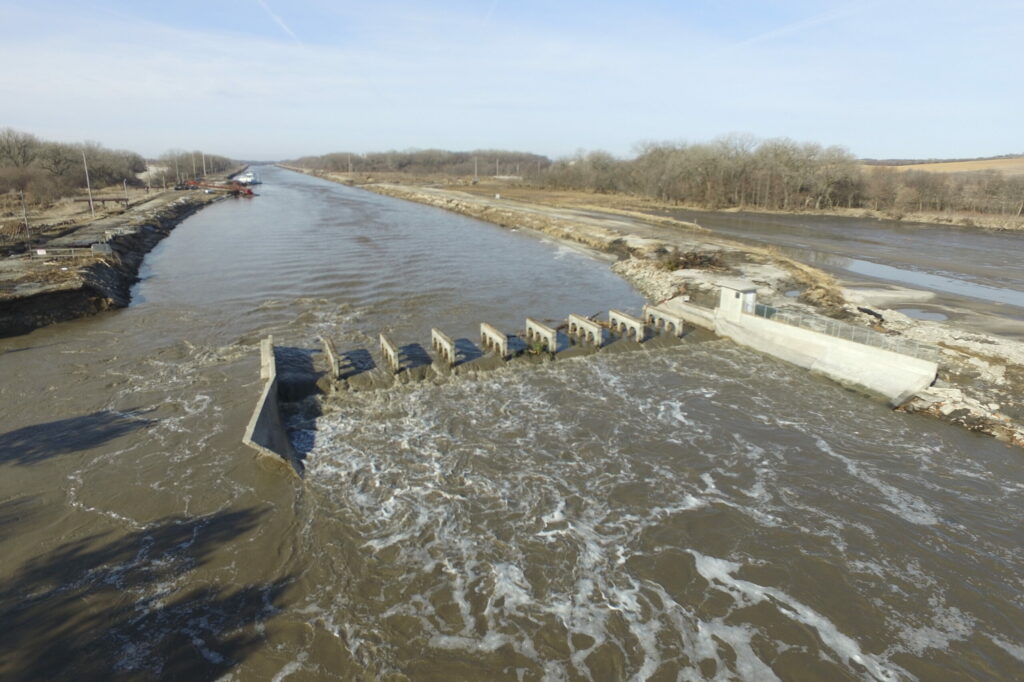
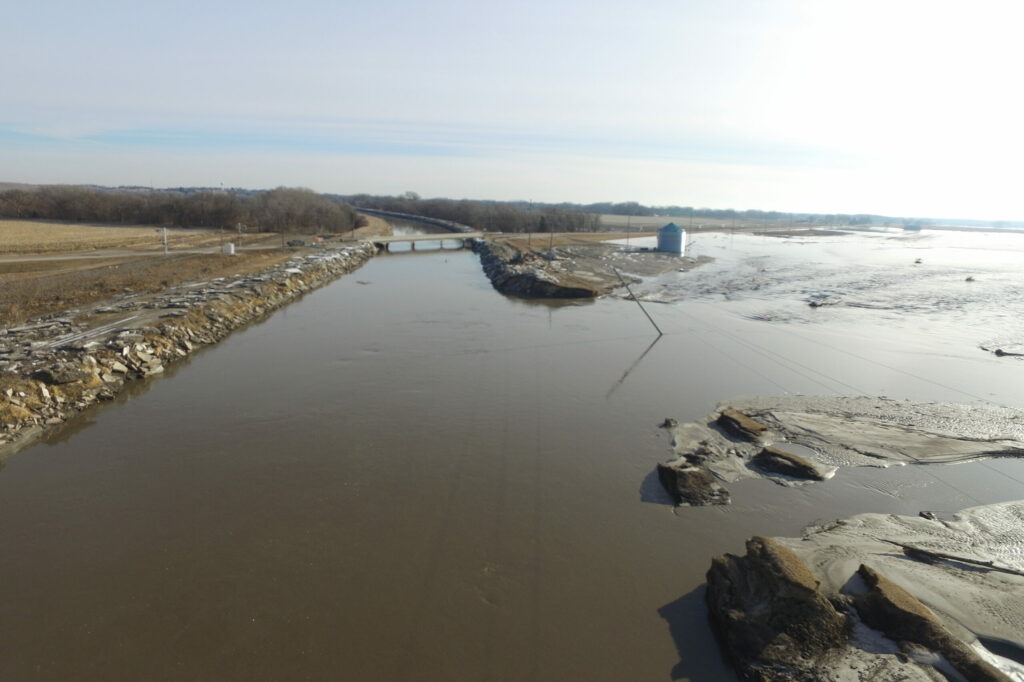
‘We could fill a need’
The intake structure, emblazoned with the year 1936, stood its ground during the barrage — a testament of Loup’s history and strength, encouragement to those looking forward.
And that’s exactly what employees did as soon as they saw the damage.
“We started piecing things together and getting a plan of what we were going to do,” Zarek said.
There wasn’t really much time for decisions, Hellbusch said. “We just knew we needed to get the water stopped,” he said.
But first, crews had to get to the Headworks. The roads were impassable.
It was a problem echoed across the state as county after county declared emergencies due to catastrophic flooding. Rivers broke levees and washed out roads.
Despite the losses, Nebraska Strong became a mantra that motivated and inspired people to aid their neighbors, near and far. The same held true for the Headworks’ neighbor, Preferred Sands.
The company’s sand processing plant sits just over the hill to the north of the Headworks. It purchases sand dredged from the canal’s settling basin and produces silica sand and resin-coated products.
Production Manager Keith Ferris was at the Preferred site that Wednesday evening, keeping an eye on things. When the power went out, he knew it meant trouble for Loup.
Ferris has a close connection to the Headworks. He grew up in the area. His father, Lance, works for Loup. His great-grandfather did as well.
“I know if we needed help, they’d help us,” he said.
Plant Manager Scott Teigen said it didn’t take long for Ferris to suggest they help their neighbors.
“Keith jumped in and realized we have a dozer, we have the excavators and we have the trucks,” he said. “We could easily fill a need.”
The plant closed due to flooding and power loss. Both Preferred and the Headworks lost power because of damage to two substations along the canal and power poles near the Highway 22 breach.
On Saturday, Preferred employees created a makeshift road from their plant over the sand pile so they could drive their trucks to the Headworks.
Later that day, they began hauling dirt and rock to help fill the north-side canal breach. The river was still high and it felt like a losing battle at first, the water washing away their effort.
But they persisted, emptying large 40-ton dump trucks with each load, finally closing the gap on Tuesday, March 18.
“The guys don’t have to be here,” Ferris said. But they wanted to help. “There is a light at the end of this tunnel.”
‘You just react and pray’
The Loup River was still flowing in and out of the canal through another two major breaches — one on the south side of the intake structure and another near the Highway 22 bridge that was causing damage to Highway 39.
The weir bridge washed away during the flood so there was no easy way to get equipment to the south side of the canal.
By the weekend, flooding was affecting additional portions of the state. The Nebraska National Guard dropped sandbags near Ashland to protect water wells used by the city of Lincoln.
That sparked an idea for Ron Ziola, Vice President of Engineering.
He began making calls, starting with the Nebraska Department of Natural Resources. Staff members there directed him to the Army Corps of Engineers who offered to arrange a helicopter and get large, vertical lift sandbags for the District.
Preferred Sands also had extra sandbags on site that they brought to the Headworks. They hauled sand in their trucks while Loup employees filled the 1,500-pound sandbags with the help of a belt conveyor on loan from Preferred.
Everything was on track until District managers received word that requests for assistance must come through Nebraska Emergency Management Agency (NEMA).
Denise Ziemba, Region 44 Emergency Manager, was a little more than six months into her new role as Region 44 Emergency Manager, when the flooding hit. She studied, prepared and planned as much as possible in those months.
“I don’t think any plan could prepare you for what would happen,” she said. “You just react and pray that the decisions you’re making are the right ones,” she said.
Ziemba helped coordinate the earlier evacuations of Genoa and was working through disaster relief in Boone, Merrick and Nance Counties. She was also in contact with Ziola, and Neal Suess, Loup President/CEO, trying to get damage cost estimates as well as updates on efforts to fill the breaches.
Ziemba agreed the District needed sandbags to help fill the main south side breach and called NEMA requesting aid.
On Thursday, a week after the breach, two Black Hawk helicopters landed at the Headworks with 18 Nebraska National Guard soldiers who were ready to help.
The National Guard worked for three days to fill the breach, finishing on Saturday, March 23. It took 280 sandbags.
Preferred employees continued to haul sand and rebuild the permanent road that runs from Headworks Park along the canal to the shop. Koch Excavating and Bygland Dirt Contracting, Inc., were also working on roads in the area.
Crews restored power to the Headworks and Preferred Sands on Wednesday, March 27, with the help of Schmader Electric.
Preferred employees helped close the large breach by the Highway 22 bridge on Friday, March 29.
And on Saturday, March 30, Loup employees got their first chance to rest after working every day for more than two weeks.
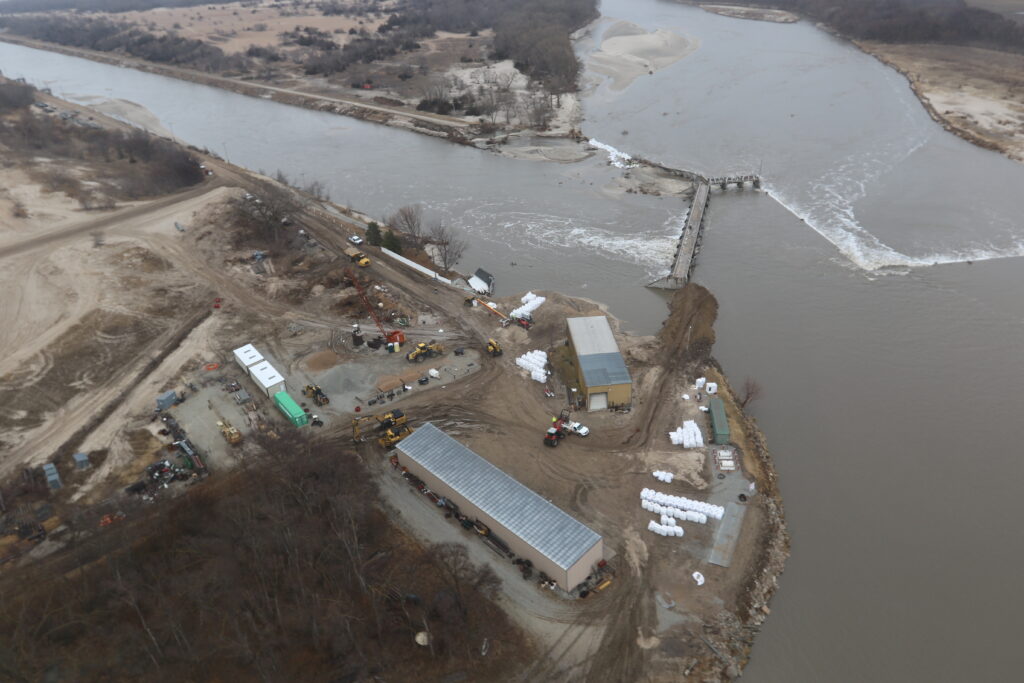

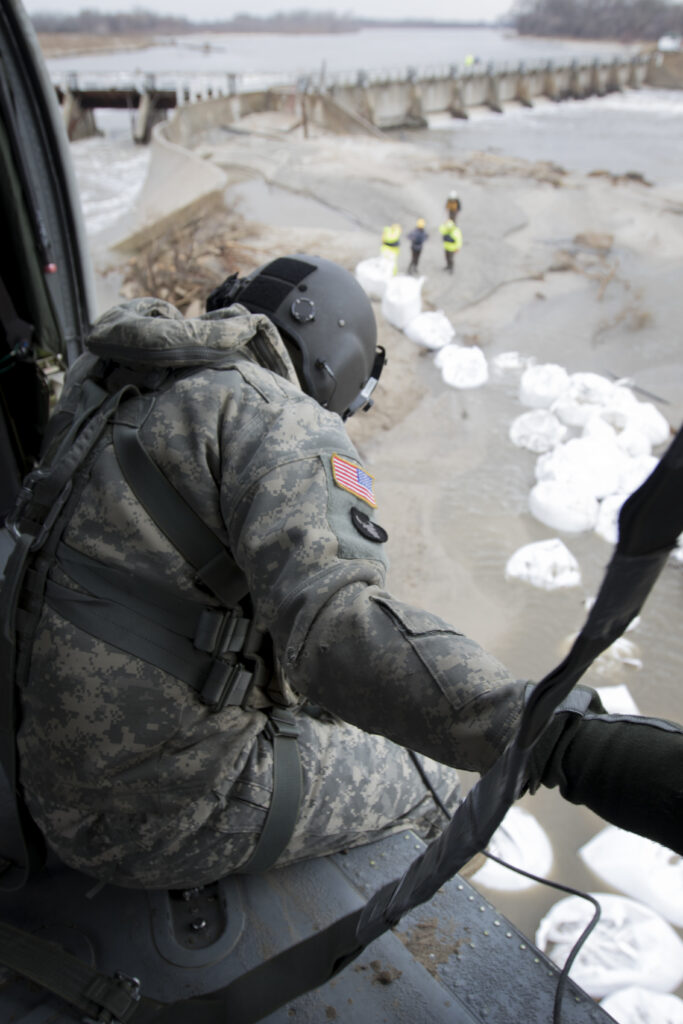

‘A long road ahead’
District personnel are now working to turn temporary fixes into permanent repairs.
The canal walls need riprap. Crews have to build a new bridge. The dredge took on water during the flood and has two motors to be replaced.
Hellbusch said this damage is more extensive than that sustained in the flood of 1966 and will take more time. The weather conditions also affect repairs.
The 1966 flood followed heavy rains during an August drought. This storm hit as the rainy season is just beginning. In the first few weeks following the flood, there was more rain and clouds than sun.
“We’ve got a lot more obstacles to fight,” he said.
The District’s two powerhouses were not damaged in the flood and Loup continued to generate electricity.
“We continued generating to lower water levels to alleviate flooding,” said Hydro Superintendent Brad Morton.
While the emergency was overwhelming at times, Hellbusch said Loup employees always jump in and get right to work following storms. He’s seen it time and again in his 34 years with the company.
“It’s all we’ve ever done,” he said. “Everybody is willing to pitch in and help.”
Zarek said working 12-hour days for weeks with his coworkers was difficult, but they helped each other through the struggle.
“It’s like a family,” he said.
Prososki knows it’s a long road, but he is quick to put the fight into perspective. Loup Power isn’t alone in trying to recover from a historic flood. NEMA estimates that 95 percent of Nebraskans were affected by the March storms.
“We had a family that lost everything they owned. Other families did, too,” he said. “Everybody’s had a loss of some kind.”
Despite his loss, Zarek remains upbeat and positive that things will get back to normal.
“We’ll get this back together and life will go on. It will look great,” he said. “We just need a little time.”
